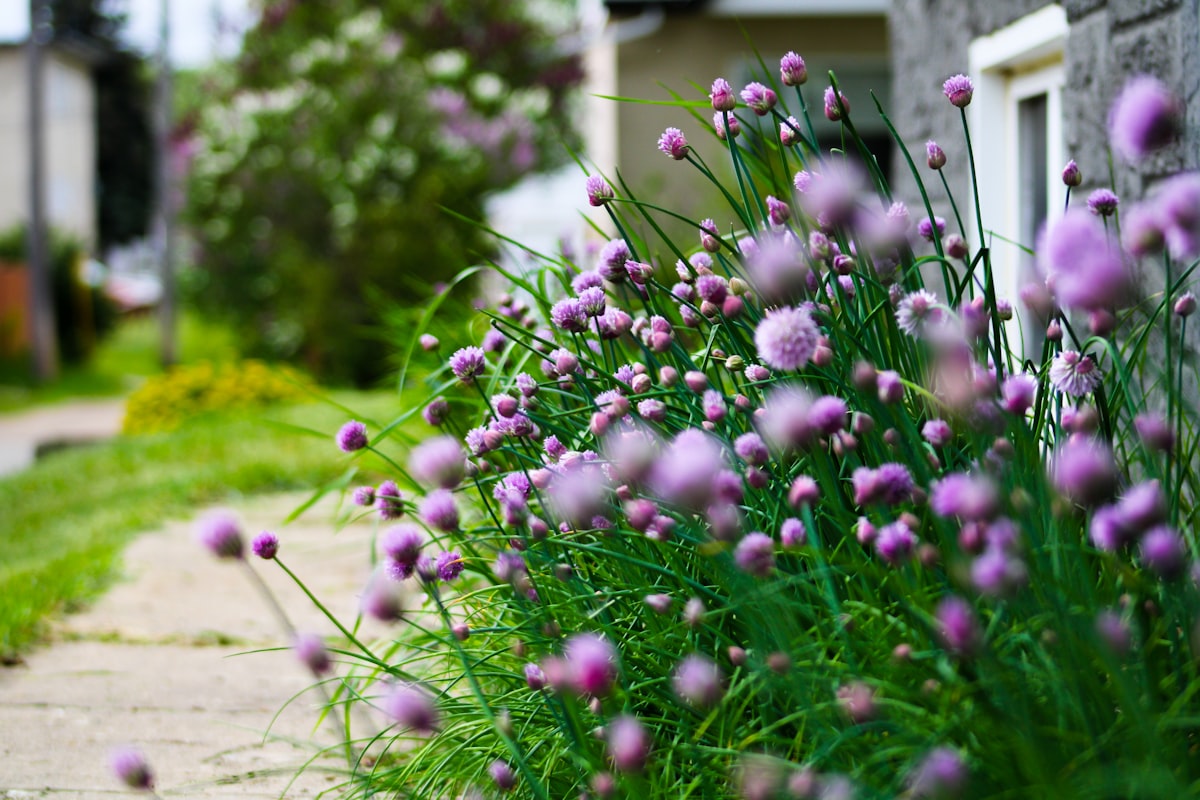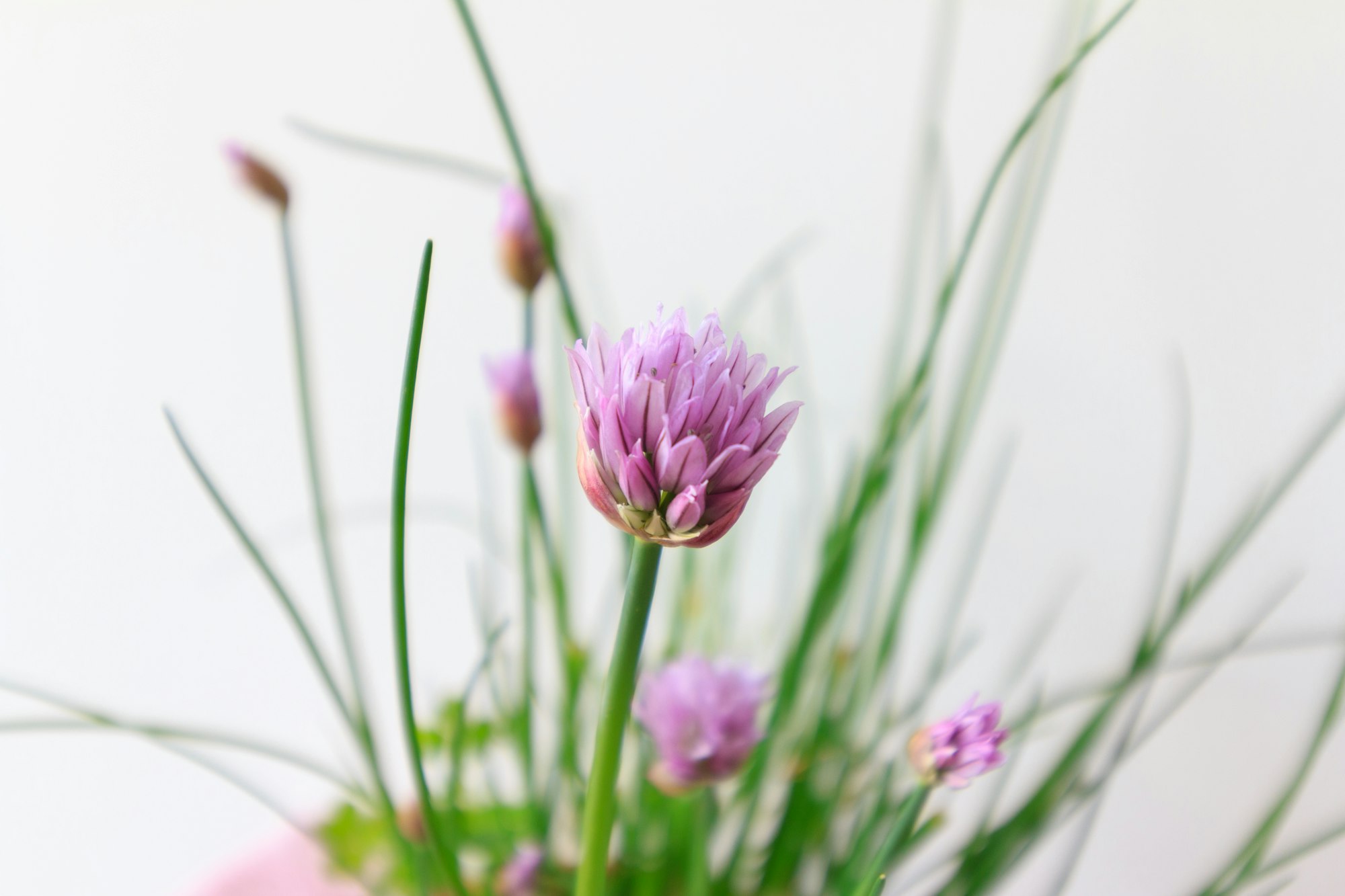How to Grow Chive
Growing chives can be a rewarding and flavorful addition to your garden. As perennial members of the onion family, these plants boast beautiful edible flowers and serve as an effective companion plant that deters pests.

Table of Contents
To start your chive-growing journey, choose a location with fertile, loamy soil and a pH between 6.0 to 7.0.
Chives thrive in full sun to part shade and are cold hardy, making them suitable for various climates.
Following proper planting and care techniques, you'll soon enjoy the subtle, onion-like flavor chives bring to your favorite dishes.
About Chive
Chives (Allium schoenoprasum) are a perennial herb belonging to the onion family. This versatile garden plant is known for its edible and attractive flowers, making it a popular choice for culinary and ornamental purposes.
Closely related to Allium tuberosum, commonly known as garlic chives or giant Siberian chives, these perennial herbs are effortless to grow and maintain.
You'll enjoy their flavorful leaves, beautiful flowers, and the benefit of having a natural pest deterrent in your garden.
Growing Chive
To start growing chives, plant seeds or rooted clumps in spring after the danger of frost has passed.
Ensure your chosen site has full sun and well-drained soil rich in organic matter. Chives can also be grown indoors in a bright, sunny location.
When planting chives, space seeds or seedlings approximately 8-12 inches apart in rows.
Cover seeds lightly with soil and water gently but thoroughly. Chives grow slowly and will begin to self-seed, eventually forming clumps that can be divided and replanted.

Caring for Chive Plant
Sun and Temperature
Chives thrive in full sun to light shade and are cold, hardy perennials in zones 3-9.
They grow well in temperatures down to 40°F and go dormant in winter when they drop below freezing.
Water and Humidity
Keep the soil consistently moist by watering young chive plants throughout the growing season.
Established chive plants require less care with watering, but be mindful not to over-water or let them sit in soggy soil.
Soil
Choose fertile, well-drained, loamy soil with a pH between 6.0 to 7.0 for planting chives.
Incorporate 4 to 6 inches of well-decomposed compost into the soil before planting to improve soil structure and provide organic matter.
Fertilizing
Chives benefit from regular fertilization, so consider applying an all-purpose, slow-release fertilizer to the soil at planting time.
During the growing season, you can also supplement with liquid feedings as needed to maintain nutrients in the soil.
Pruning and Propagation
Prune chive flowers after they bloom to prevent self-sowing and promote continuous growth.
Every three to four years, divide the clumps of chives and transplant the divisions into new locations or pots to prevent overcrowding and ensure vigorous growth.
This process can also propagate new plants or move chives to containers for indoor growing during winter.
Troubleshooting Plant Problems
Growing Problems
Chives require well-draining soil to prevent water-logged roots. To avoid overwatering, keep the soil moist but never wet or soaked.
Ensure that pots or containers have drainage holes and empty excess water when necessary.
Chives are cold-hardy perennials in zones 3-9 and thrive in temperatures down to 40°F. They prefer full sun to part shade and fertile, loamy soil with a pH between 6.0 to 7.0.
Pests and Diseases
While chives don't have serious pest or disease issues, they may occasionally experience problems with fungal diseases like rust or mildew.
To prevent these, maintain proper spacing between plants and ensure good air circulation.
Additionally, watch out for pests like thrips and Japanese beetles.
Should issues arise with pests, consider using biopesticides, insecticides, or natural predators to treat the infestation.
Companion Planting
Chives can be a valuable addition to your garden when planted near carrots, peas, and tomatoes, as they offer natural pest control and enhance the growth of these plants.
This is due to chive's ability to repel harmful pests while attracting beneficial insects such as bees and other pollinators.
When implementing companion planting techniques, ensure proper spacing to avoid overcrowding and promote healthy growth.
Harvesting and Storage
Harvest chives by snipping the leaves at the base of the plant during their growing season.
To maintain steady growth, avoid picking more than one-third of the plant at a time.
In storage, wrap fresh chives in a damp paper towel and store them in a sealed container in your refrigerator.
Consider freezing or drying chives for longer storage to preserve their flavor and nutrients.
How to Use It
Chives add a delightful onion flavor to numerous dishes, enhancing the taste of salads, soups, and stews.
Their attractive purple flowers are visually appealing and edible, giving a touch of color and a mild oniony note to your culinary creations.
Additionally, chives can be used as a garnish for various dishes, such as scrambled eggs, providing a fresh taste and a pop of green color.
Use them freshly chopped for maximum flavor, and don't hesitate to experiment by incorporating chives in other recipes where an onion flavor would be a welcome addition.
Conclusion
Planting chives requires a location with plenty of sun, well-drained soil, and decent moisture.
Remember to incorporate 4 to 6 inches of well-decomposed compost into the soil before planting. Chives prefer a pH between 6.0-7.0 and are perennial in zones 3-10.
When harvesting, ensure your chive plant has reached at least 6 inches in height before gently cutting 2-4 inches above the base.
By doing so, your plant will continue to grow back, providing a continuous supply of delicious chives for your culinary needs.
Frequently Asked Questions
What are the best conditions for growing chives?
Chives thrive in fertile, loamy soil with a pH between 6.0 to 7.0. They grow best in full sun but will tolerate light shade.
How do I properly plant and care for chive bulbs?
Before planting, incorporate 4 to 6 inches of well-composted organic matter into the soil. Work compost into the soil to a depth of 6 to 8 inches. Start chives indoors, 6-8 weeks before the last frost, as they grow slowly.
What are the various stages of chives' growth?
Chives start as seedlings and slowly develop slender, bright green leaves. They can flower with purple pom-pom blooms, which are also edible.
How can I effectively harvest chives?
Once chives have reached about 6 inches in height, you can start harvesting by cutting the leaves about 2 inches above the soil. Harvest regularly to encourage continued growth.
Do chives thrive better in sun or shade?
Chives grow best in full sun, though they will tolerate light shade. Providing ample sunlight will help maximize growth and flavor.
Are chive plants perennial?
Yes, chives are cold, hardy perennials in zones 3-9. They go dormant through winter when temperatures drop below freezing and return in the spring.


